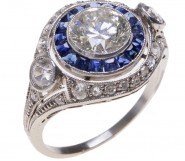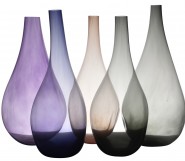Lot #37 - Haughton Forrest
-
Auction House:Mossgreen
-
Sale Name:Fine Australian & International Art
-
Sale Date:29 Aug 2016 ~ 6.30pm - Part 1 (Lots 1 - 78)
30 Aug 2016 ~ 2.30pm - Part 2 (Lots 79 - 328) -
Lot #:37
-
Lot Description:Haughton Forrest
(1826 -1925)
(Lighthouse, Dorset)
oil on canvas
61 x 74 cm
signed lower left: H Forrest; inscribed in pencil to frame verso: 1893 -
Provenance:Antiques and Fine Art, Gowans Auctions, Hobart, 14 November 2009, lot 131 (as Lighthouse and Fishing Boats, (possibly Channel Islands)); Private collection, Hobart. Of note: This painting has been catalogued by The Forrest Project (cat. no. HF2.3.015)
-
References:Ayling G.M. & Smith I.C. (2016), Haughton FORREST (1826-1925) Vol. 1 - Biography and Catalogue of Paintings, 3rd Edition p.109; Ayling G.M. & Smith I.C. (2016), Haughton Forrest (1826-1925) Vol. 2 - Gallery of Paintings, 3rd Edition p. 20
-
Notes:Captain Haughton Forrest was one of the most talented and productive painters working in Tasmania in the late nineteenth and early twentieth century. Although he enjoyed fame and commercial success in his lifetime, he remained a somewhat neglected figure following his death. He was part of a small group of mature English artists - including Benjamin Duterrau and John Glover - who permanently settled in Tasmania in the mid to late nineteenth century and saw their art blossom with the rise of wealth in the colony. Forrest arrived in Hobart in 1876, at the age of forty-nine, full of worldly experience. Until that time, his life had been shaped by sojourns of varying durations in France, Germany, England, Jamaica, Panama and Brazil. Unlike Glover and Duterrau, who were both London-trained and frequent exhibitors at the Royal Academy, Forrest was not a professional artist. He was described as one who 'loved the sea, spent a great deal of his time yachting and painting marine subjects. He had never had a lesson in his life but [was] said to have painted since he was four years old.' The idea of the self-taught artist has no doubt both dignified his work with 'genius' and at the same time positioned it in the league of a dilettante. Just a few months after arriving in Hobart, Forrest was already exhibiting two paintings in a shop in Elizabeth Street. They were well received by a local reviewer who, whilst acknowledging that they were the work of an amateur artist, found the drawing to be 'exceedingly good... [and] in most other respects [one] picture is excellent... worthy of inspection by lovers of art.' Forrest quickly found his professional niche in Hobart. In the late 1870s, around the time Forrest arrived in Tasmania, Knut Bull effectively ceased painting due to ill health, and W.C. Piguenit had left the island to live and work in Sydney, leaving Forrest the only true marine artist of notable skill. This void in artistic talent saw that Forrest received commissions swiftly and continuously in the following decades, as he consolidated his position as the leading marine and landscape painter. In Tasmania, Forrest executed many local and European views. Indeed, in the words of Ian Smith, the artist's great-great grandson, 'Haughton Forrest painted for English settler friends in colonial Hobart and would paint to satisfy private requests.' Many of his settler clients commissioned pictures representing their native England, which explains the high number of non-Tasmanian works in Australian private collections. The exact location of the present work remains uncertain. The Haughton Forrest Project in Tasmania has noted how 'the lack of mountains with the characteristic basalt rocks, tends to confirm that this painting was not French or from the Channel Islands, but more likely depicted the waterfront at Poole Dorset.' This hypothesis is supported by a clue in the painting itself. Upon close inspection, we note that the vessel with the lowered mast in the centre of the composition bears the initials 'PE3' on its hull, denoting Poole, Dorset. One final possibility lies in the shape and form of the lighthouses. If we are to believe that Dorset is indeed the location, the lighthouse at least, may be the one new Portland Bill lighthouse, Dorset. Built in 1906 it carries a striking resemblance to the one in the present work. Whatever the source, the present work, with its exceptional quality and highly finished detail, confirms Forrest's place as the unrivaled marine painter of Tasmania. Petrit Abazi We are grateful to Geoff Ayling and Ian (Malik) Smith for their assistance in cataloguing this work.
-
Estimate:A$20,000 - 30,000
-
Realised Price:
-
Category:Art
This Sale has been held and this item is no longer available. Details are provided for information purposes only.










